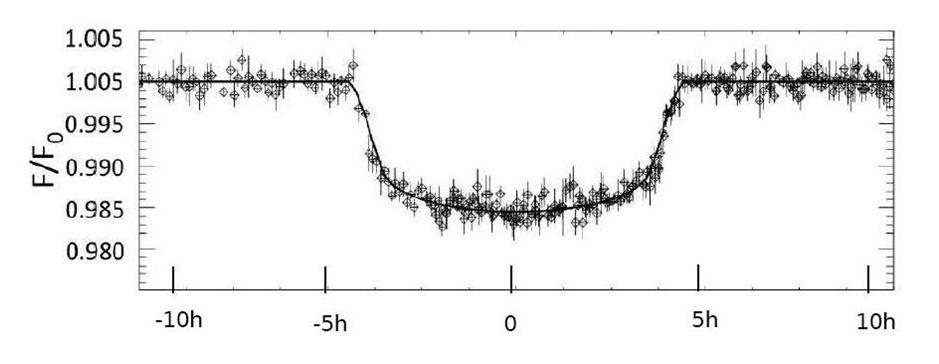This exoplanet's transits are difficult for amateurs to observe,
pasrtly because the depth is shallow (9 mmag), but mostly because the length
is longer than most observing sessions. This object may require multiple
observers to adequately characterize one transit event. There are two ways
of doing this: 1) transform instrumental mag's to standard mag's (the way
AAVSO wants), and 2) observe the same object in OOT using same FOV placement
and same reference stars. The second method is what I prefer. The next transit
will be 2010.06.18, with the best observing longitude for ingress, mid and
egrees being India (20.4 UT), Portugal (0.7 UT), and US East Coast (5.1 UT).
RA = 18:43:08.8, DE = +06:12:15
Season = July 03
V
= 13.7, B-V = 0.xx, J = 12.175, K = 11.688 -> B = 14.46, V = 13.65, Rc
= 13.21, Ic = 12.79, B-V = 0.80
HJDo = 4603.3447 (1) & P = 95.2738 (14)
days (e.g., Schneider listing in Extrasolar Planets Encyclopaedia)
Depth = 17.2
± 0.8 mmag (CoRoT filter)
Length = 8.7 ±
0.2 hr
Fp = 0.20 ±
0.10, F2 = 0.82 ± 0.15
b = 0.xx

References
Discovery paper: Deeg, H. J. et al, 2010, http://www.nature.com/nature/journal/v464/n7287/abs/nature08856.html
Joao Gregorio info for CoRoT-9
Return to calling web page AXA
____________________________________________________________________
WebMaster: Bruce
L. Gary. Nothing on this web page is copyrighted. This site opened:
2010.03.19 Last Update: 2010.03.19